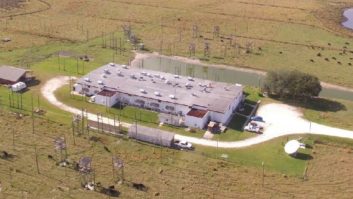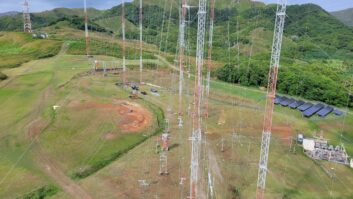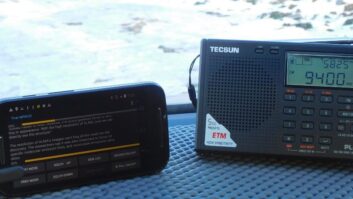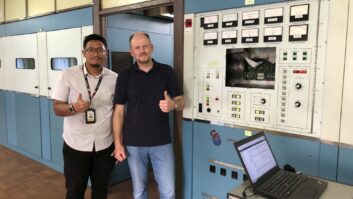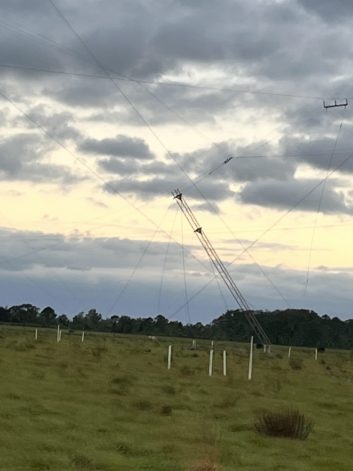
The vast Okeechobee, Fla., antenna farm of privately-owned WRMI, which transmits programming to the world via shortwave radio, was hit hard by Hurricane Ian.
WRMI has 14 transmitters and 23 antenna systems. “We had winds up around 100 miles per hour, and that did a real number on our antenna field,” said Jeff White, general manager of WRMI.
“So far we have three antennas that are probably destroyed beyond repair: one to Europe, one to Africa and one to Central America and the South Pacific.”
As pressing as rebuilding these three antennas is for WRMI, “The biggest job we have at the moment is putting back up dozens of telephone poles that carry the transmission lines from the transmitter building to the antennas,” said White.
“The high wind left many of these poles leaning severely or down altogether. We have to get these back up so the transmission lines are off the ground before we can turn the transmitters back on.”
Fixing a severely damaged antenna farm would be challenging at the best of times, but thanks to Hurricane Ian’s drenching, these are not the best of times.
“It’s hard to get those transmission line poles back up right now because the field is very wet, muddy and swampy,” White told Radio World. “I went out into the field in one of our four-wheel-drive trucks on Thursday and we got stuck in the muck and had to get another truck to pull us out. These are the conditions that our engineers are working in to get those poles back up as soon as possible. It’s hard work.”
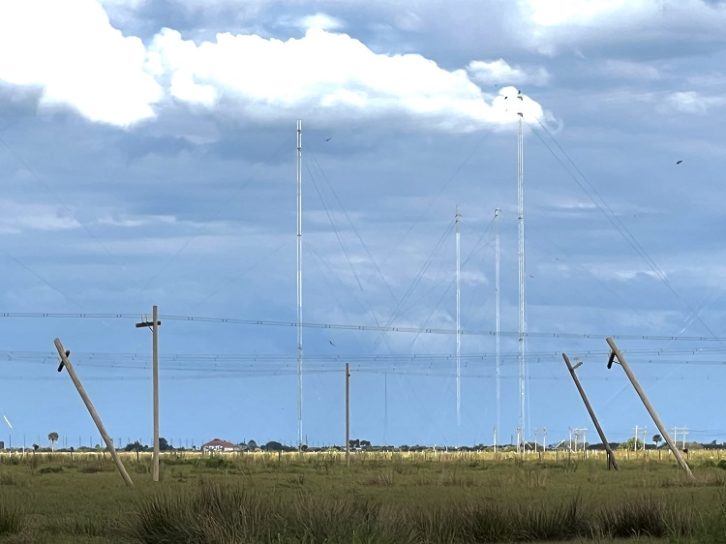
Not surprisingly, losing antennas and transmission lines are cutting into WRMI’s broadcast schedule. The station started shutting down transmitters during the early evening on Sept. 28 as Hurricane Ian pounded Florida. By about 9 p.m. Eastern Time, “the winds were really high and we had only transmitter 8 still on the air, 5950 kHz,” said White.
“Then at 9:59 p.m. the power went out and we were off the air. Only our internet stream, which carries the programming of 9955 kHz, was still running. It never went out.”
WRMI’s electricity came back on the next day at 3:30 p.m., but the station couldn’t bring the transmitters up until the transmission lines and antennas had been checked for damage.
“We finally got Transmitter 8 back on the air at 5 on Saturday afternoon,” White said.
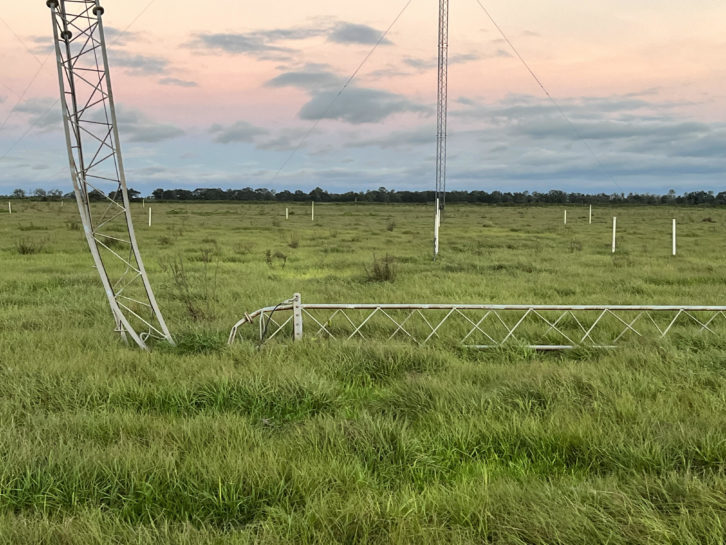
As of Monday, when Radio World contacted White for comment, WRMI had restored service on 5950 and 9395 kHz, and was working to restore 9455 kHz as well.
“We are running them 24 hours a day with regular programming and some of the programming from other transmitters while they’re off the air,” he said. “Judging from my experience with the last big hurricane to hit us several years ago, which did similar damage to the antenna field, I would say that it will take us about a week or so to get all frequencies back on the air. It may actually be a little bit longer than that. We’ll see how conditions remain in the field, and whether we get any more rain that could make things worse out there.”
Radio Miami International has studios in Miami as well as studios and transmitters in Okeechobee. It also reaches parts of the world by means of relay facilities and worldwide by internet streaming. WRMI sells blocks of airtime to outside organizations.





